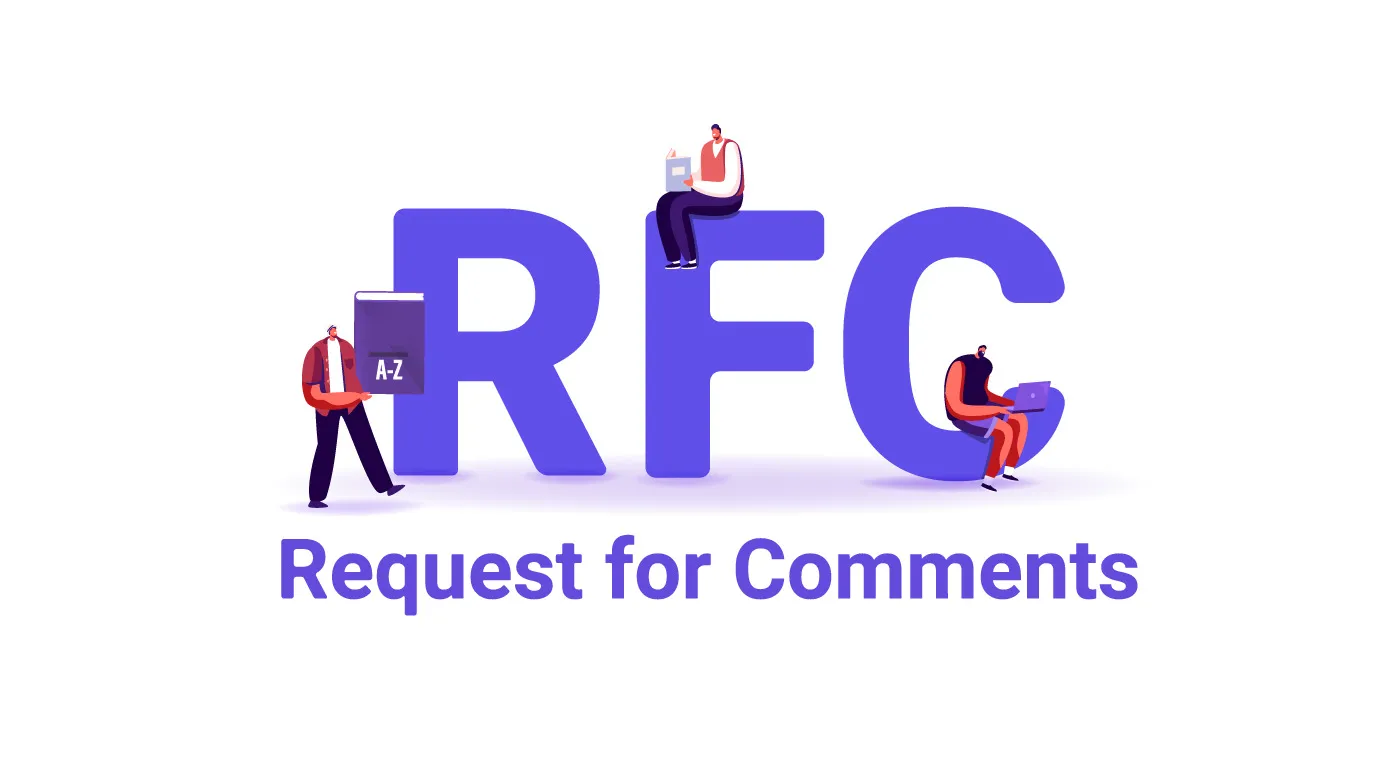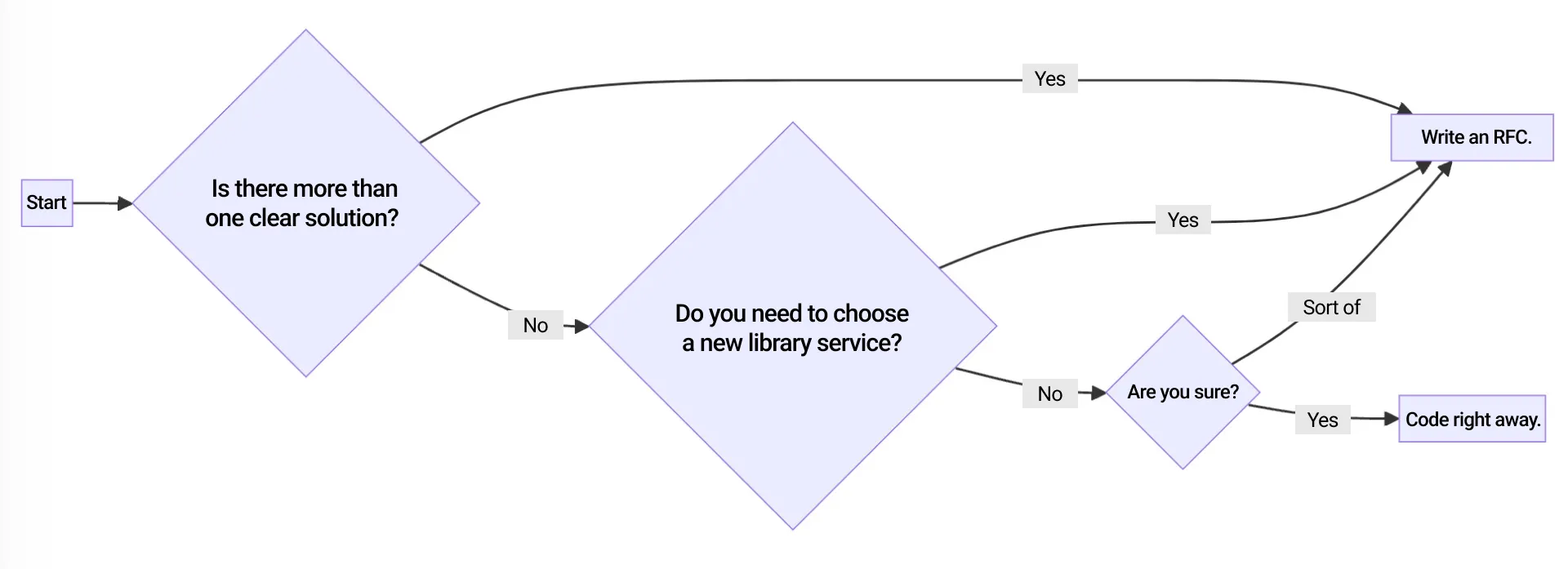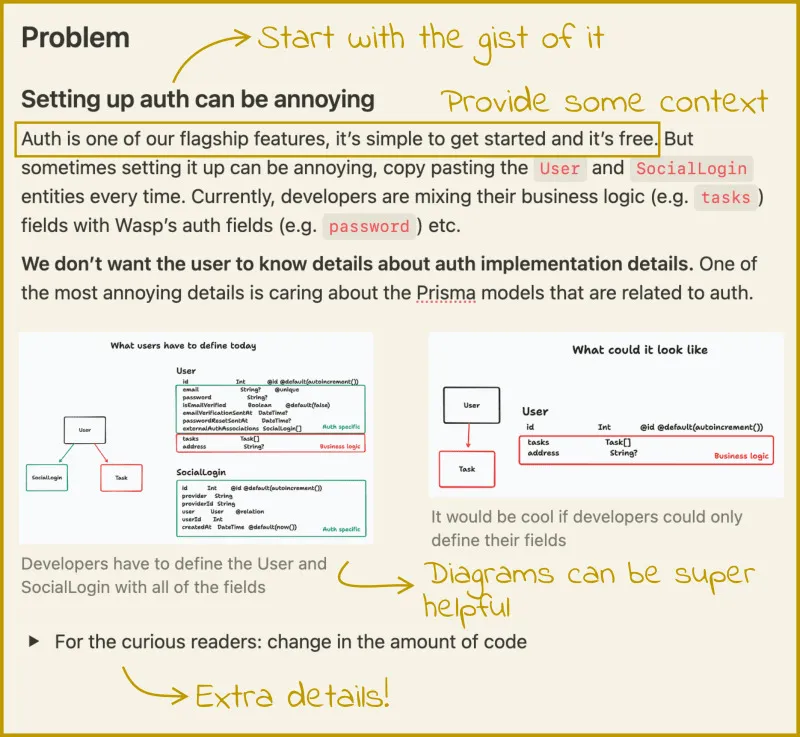

Effective development strategies: A guide to writing RFCs
The following is my personal interpretation of the article Develop the right thing every time and become a 10x engineer 🏆: The art of writing RFCs. The images and diagrams are attributed to the article.
If you are interested, I encourage you to take a look at the original article.
Introduction: The importance of RFCs and their impact on development
The role of RFCs in the development process
In a development project, a Request For Comments (RFC) is a great tool to aid in communication. An RFC is a document used when a developer proposes a new feature, change, or architectural enhancement, and it serves to clearly communicate the proposal to various stakeholders inside and outside the project team. It includes the background, purpose, action plan, and expected pros and cons of the proposal, and it provides an opportunity for team members to give and receive feedback on the proposal.
The role of RFCs in the development process is critical. They are more than just technical documentation; they help you understand the goals and vision of your project and provide direction in the early stages of the development process. RFCs are essential for building a comprehensive understanding of a complex system or feature, and they go a long way toward reducing misunderstandings and miscommunications that can arise as a project progresses.
The positive impact of RFCs on efficient development
RFCs have a number of positive impacts on the development process. For starters, RFCs allow developers to express their ideas clearly and concretely. This ensures that stakeholders inside and outside the team understand the essence of the proposal and can provide more effective feedback. RFCs also facilitate discussion among team members and provide an opportunity to align their thinking. This helps build consensus on the direction and strategy of the project, and allows potential issues to be identified and addressed in advance.
- Provides clarity on complex and open problems.
- Enhances learning by allowing you to explore different approaches before diving into coding.
- Pools the knowledge of team members to get a complete understanding of the problem.
- The entire team has a better understanding of the codebase and the features being developed.
- The PR review process becomes smoother, and code changes are better understood.
- Much of the documentation work is already done, simplifying the final documentation process.
Basic principles of RFC writing
When to write an RFC and when to omit it

When to write an RFC may be considered under the following conditions
- When multiple solutions are possible for a project, to coordinate opinions among stakeholders and determine the best direction
- When selecting a new library or service, clarify the reasons and expectations for the choice and encourage discussion of alternatives
- When new information or requirements arise during the course of a project that requires you to reconsider your original decision
On the other hand, there are situations where an RFC can be omitted, such as the following.
- The solution is clear and there is already consensus among stakeholders.
- The change or decision is very minor or aligned with existing direction.
- When time is of essence and immediate action is required, you can move forward with a streamlined decision process.
The importance of a clear purpose and background statement

When writing an RFC, a clear statement of purpose and background is essential. It establishes the direction of the RFC and helps stakeholders get to the heart of the document. The background statement clarifies the need for and origin of the proposal, which helps readers understand the context of the proposal. A clear statement of purpose defines what the RFC is trying to accomplish and emphasizes its relevance to the project's goals.
Accurate representation of problems and goals
In an RFC, it is important to accurately represent the problem and goals. This reveals the specific problems the proposal is trying to solve and conveys the importance and urgency of the project. By accurately describing the problem, the reader recognizes the seriousness of the issue and the need to solve it. Additionally, setting clear and specific goals sets the bar for success for the project and keeps everyone on the same page.
Improving communication with RFCs
Effective communication strategies between stakeholders
RFCs are a key tool to facilitate effective communication between stakeholders. They enable a transparent dialog about a project's ideas, goals, and implementation methods. RFCs ensure diversity of opinion in the decision-making process by giving all stakeholders the opportunity to understand and comment on the proposal.
Clearly communicate and understand requirements
Clear communication of requirements through RFCs is essential to the success of a project. It helps ensure that the development team and stakeholders are on the same page. Accurate and detailed documentation clarifies the purpose, scope, and expected outcomes of a project and minimizes misunderstandings and confusion that may arise as the project progresses.
Conclusion: The importance of a development strategy that leverages RFCs
RFCs make project management more efficient
RFCs play an important role in making project management more efficient. They help managers and team members manage projects more systematically by clarifying the goals, scope, and expectations of a project through documented communication.
Continuous use of RFCs in development
Continuous use of RFCs during development promotes better communication and collaboration within and across teams. By referencing RFCs at each stage of development, you can maintain project consistency and effectively manage changes and updates.
.svg)
.svg)






